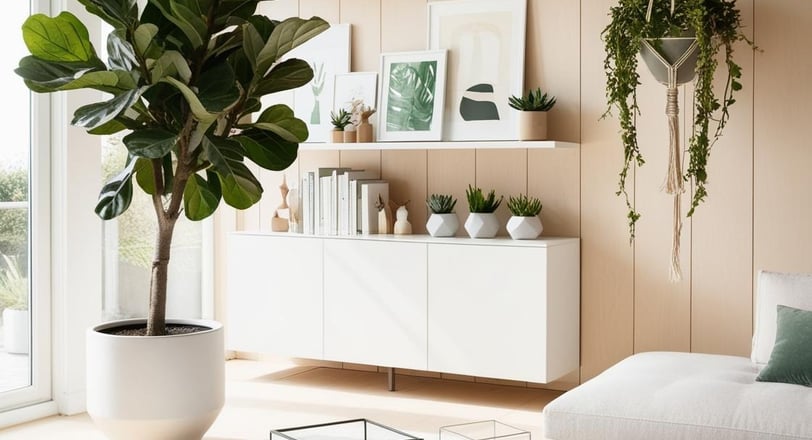How to Use Plants in Interior Decoration
12/3/20242 min read


Plants are more than just decorative elements—they bring life, freshness, and a sense of tranquility to any space. Whether you have a green thumb or are a novice gardener, incorporating greenery into your home can elevate its aesthetic appeal. Here’s how you can effectively use plants to transform your interior spaces.
1. Choose the Right Plants for Each Space
Not all plants thrive in every environment. Evaluate the light, humidity, and temperature of each room before selecting your greenery. For low-light areas, options like pothos, peace lilies, or snake plants are ideal. Bright spaces are perfect for succulents or fiddle leaf figs.
2. Create a Statement Corner
Designate a corner of your living room, bedroom, or even kitchen as a "plant haven." Use a mix of tall floor plants, medium-sized potted plants, and smaller tabletop varieties to create layers of greenery. This can act as a focal point that draws attention and adds character to the room.
3. Hang Plants to Save Space
If you’re short on floor space, hanging plants are a practical and stylish solution. Macramé hangers, wall-mounted pots, or ceiling hooks can hold cascading plants like string of pearls or ivy. These not only save space but also add vertical interest to your decor.
4. Use Plants as Room Dividers
Large plants like monstera or bamboo palms can be used as natural room dividers in open-concept homes. They provide privacy while maintaining an airy and fresh ambiance. Position them strategically to define spaces like a living room and dining area.
5. Decorate with Miniature Plants
Smaller plants like succulents, cacti, or air plants are perfect for desks, shelves, and side tables. Arrange them in decorative pots, terrariums, or small glass containers for a sophisticated touch. These mini plants are easy to care for and add subtle charm to any spot.
6. Incorporate Plants into Shelving
Mixing plants with books and decorative items on a shelf can create a visually appealing display. Trailing plants like pothos or ivy work well for this purpose, as their cascading vines add movement and texture.
7. Opt for Unique Containers
The pot or container is as important as the plant itself. Experiment with ceramic pots, woven baskets, or even repurposed items like teacups or vintage tins. These unique containers can enhance your decor and give your plants a personal touch.
8. Bring Plants to the Bathroom
Bathrooms are often overlooked when it comes to decoration, but they’re great for humidity-loving plants. Ferns, orchids, and pothos thrive in the moist environment of a bathroom, creating a spa-like atmosphere.
9. Group Plants by Style
For a cohesive look, group plants with similar aesthetic features. For example, group succulents and cacti for a desert vibe, or combine lush tropical plants for a jungle-inspired space. This creates a curated look that feels intentional and stylish.
10. Combine Plants with Other Natural Elements
To create a harmonious design, pair your plants with other natural materials like wood, stone, or rattan. A wooden coffee table adorned with a small potted plant or a stone vase filled with greenery can tie together an earthy, organic theme.
Final Thoughts
Plants are versatile and timeless additions to any home decor. By carefully selecting and arranging greenery, you can infuse your spaces with life, beauty, and a sense of calm. Whether you opt for a single statement plant or a jungle of greenery, the possibilities are endless.
